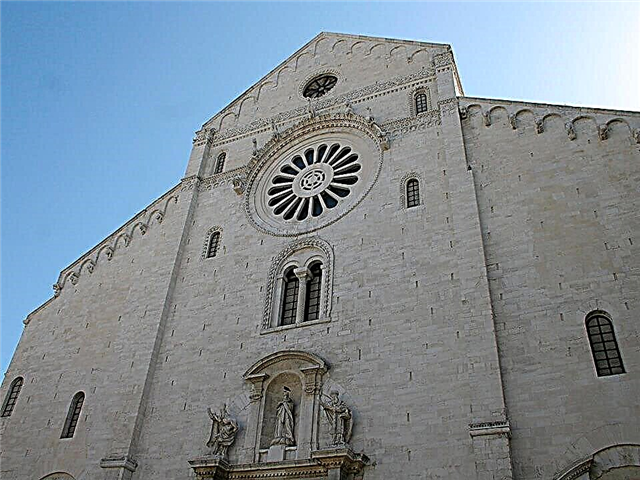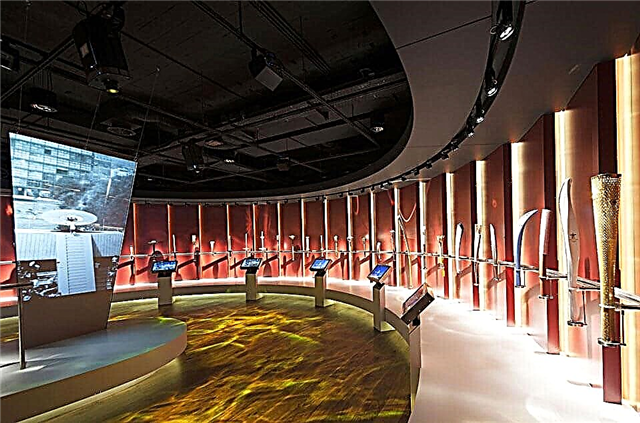Address: Russia, Moscow, Letnyaya street (Volzhskoe metro station)
Main attractions: Palace, theater Durasov, greenhouse Durasov, Park
Architect: I.V. Egotov
Coordinates: 55 ° 41'17.5 "N 37 ° 44'34.9" E
Cultural heritage site of the Russian Federation
Content:
The history of the estate
The first information about the estate, and then just a village, is found in the chronicles of the late 16th century, when it was called Yurkino. Most likely, this name appeared after the name of one of the owners. The village belonged to R. Polyaninov, and then to A. L. Korepanov. The history of the estate also includes the following fact: in 1622, the village of Yurkino was granted to the clerk G. Larionov by decree of the Russian sovereign.

Bird's eye view of the estate
In the 80s of the 17th century, the estate belonged to G.P. Godunov, one of the last representatives of a noble boyar family. At this time it was renamed Godunovo. The new owner handed it over as a dowry to his daughter. When she became the wife of V.N. Prozorovsky, the estate turned into Lyublino and has retained this name to this day.
In the second half of the 18th century, there were several peasant houses in the village, and at the end of the same century new owners appeared who built a spacious house for themselves. Who owned the estate at that time, historians do not know for sure. Some of them claim that it was the Urusov family, while others insist that it was the Razumovskys.

N.A. Palace Durasova - top view
In 1800 the estate received another owner. It was Nikolai Alekseevich Durasov, a retired foreman and a great original. Thanks to the presence of a solid state, he was able to equip the estate according to all his wishes, which significantly improved it.
On the territory of the estate, an unusual house appeared, built in the traditions of classicism according to the projects of the best architects Egotov and Kazakov. They combined the halls of the first and second floors, rectangular in shape, with the central hall in the shape of a circle. The semicircular dome was crowned with a statue of Apollo. Along the perimeter, the building was surrounded by an elegant colonnade in two rows. And the general layout of the main house was very similar to the Order of St. Anne.

N.A. Palace Durasova - the main manor house of the estate
Durasov built the theater building. Its actors and musicians were about a hundred serfs who showed their abilities in music and dancing. At the same time, outbuildings, horse yard and greenhouse buildings were erected in the estate. Every year the Durasov estate got better. Here they laid out a beautiful park with a pond and a promenade made of lindens, and by the end of the century a wooden one-domed church of Peter and Paul was built. The author of his project was the talented architect Nikolai Alexandrovich Shokhin.
In 1818, the widow of the Russian Emperor Paul I, Maria Feodorovna, came to visit the beautiful estate. In memory of this memorable event, a bust of the eminent guests was erected in the ceremonial hall.

View of the two-row colonnade of the main manor house
When Durasov was gone, the estate gradually turned into a summer cottage settlement. In the 1830s, the Pisarevs inherited the estate. During this period, their family lived on the estate Bolshie Gorki, which are known to our contemporaries as Gorki Leninskiye. And although the new owners did not often visit Lublino, it remained a popular vacation spot.
In 1866, the writer Fyodor Mikhailovich Dostoevsky came here to work on his novel Crime and Punishment. At another time, the painter Vasily Ivanovich Surikov created a historical canvas "Menshikov" here. But, unfortunately, the old dachas have not survived to this day.

Durasov's serf theater
In the 19th century, the estate acquired new owners three times. First it was the rich man Voeikov, then the merchant Golofteev, and, finally, Lyublino became the property of Rachmanin. In 1904, due to a strong hurricane, the estate was significantly damaged - the manor house was left without a roof and a statue of Apollo. But its place over time was taken by a new sculpture, which was a copy of the antique Anna-Herculanean, kept in the Dresden Museum. At the beginning of World War II, this statue was lost, and more recently it was recreated from old photographs.
After the revolutionary events of 1917, several institutions were housed in the estate. There was a high school, a Railway Club, a police station and the Institute of Oceanology. The old wooden church was destroyed in the 1920s. However, over time, it was restored in the Yegoryevsky district of the Moscow region. There you can see the Peter and Paul Church even today. Two outbuildings and buildings that are part of the horse yard complex have survived from the manor buildings. In the 1990s, the manor house was restored.

Greenhouse (west wing)
What can be seen in the estate today
It is better to start the inspection of the manor complex with an acquaintance with the main house, which is often called the Durasov palace. It was built in 1800. Today, there is a museum inside the building.
Wide flights of stairs lead visitors to the gallery. From here they can go to the Round Hall, which once served as a dining room for the owners. The interiors are decorated with multicolored painting, skillfully made using the grisaille technique. The walls are decorated with picturesque images of architectural elements - friezes, bas-reliefs and medallions. The spans between the columns fill the landscapes, and the halls contain many paintings on antique themes.

Round hall
The round hall is crowned with a high dome, which is decorated with a plafond. On it you can see the image of the goddess Aphrodite, racing in a chariot. An old pond, quiet shady alleys and an elegant gazebo built in the shape of a rotunda open from the wide windows of the palace. The floor is paved with oak parquet, with a rosette with a star in the middle.
The marble hall of the manor is also decorated with luxury and great taste. On its walls you can see the painting imitating marble and bas-reliefs. In this hall, the owners of the estate held secular balls and tea parties, which were known to all noble Muscovites. Elegant sculptures, gilded furniture and antique candlesticks are installed between the windows.

Marble hall
The Column Hall was the place for receiving guests. Two austere porticoes with columns divide it into equal parts. The hall is decorated with wall paintings "grisaille", and the rest of the space is painted over in a pale pink tone. The columns are decorated with expensive pink marble. Above the cornice is a panel depicting scenes from ancient Greek mythology. The painting with the landscapes of the estate itself gives a special flavor to this room. The upper floors of the main house were used as living quarters.
Connoisseurs of Russian architecture will not be left indifferent by the facades of the main house - the embodiment of the classicism style. They harmoniously combine square and rounded elements, a dome-roof and a majestic semicircular colonnade. The third floor is built in the form of a round superstructure - a belvedere. The yellow façade is refreshed by white bas-reliefs depicting scenes from Greek myths. On one of them you can see the rite of passage of young girls to Aphrodite.

Pink Living Room or Column Hall
The manor also houses a theater building. Durasov's excellent theater and first-class performances were well known at the court of the Russian sovereign. When Maria Feodorovna arrived at the estate in 1818, she highly appreciated the art of serf actors and the beauty of the estate greenhouse.
While walking around the estate, you can see the house of the manager, the greenhouse and the outbuilding, which served as a boarding house for noble children. In the back of the courtyard there are also a stable and two other outbuildings. In addition to the old park, which has lost its original appearance, the Lublin Pond, a place where Muscovites love to rest, has been preserved on the backyard territory.
The former noble nest is located not far from the Moscow metro station "Volzhskoe", on Letnaya street.











